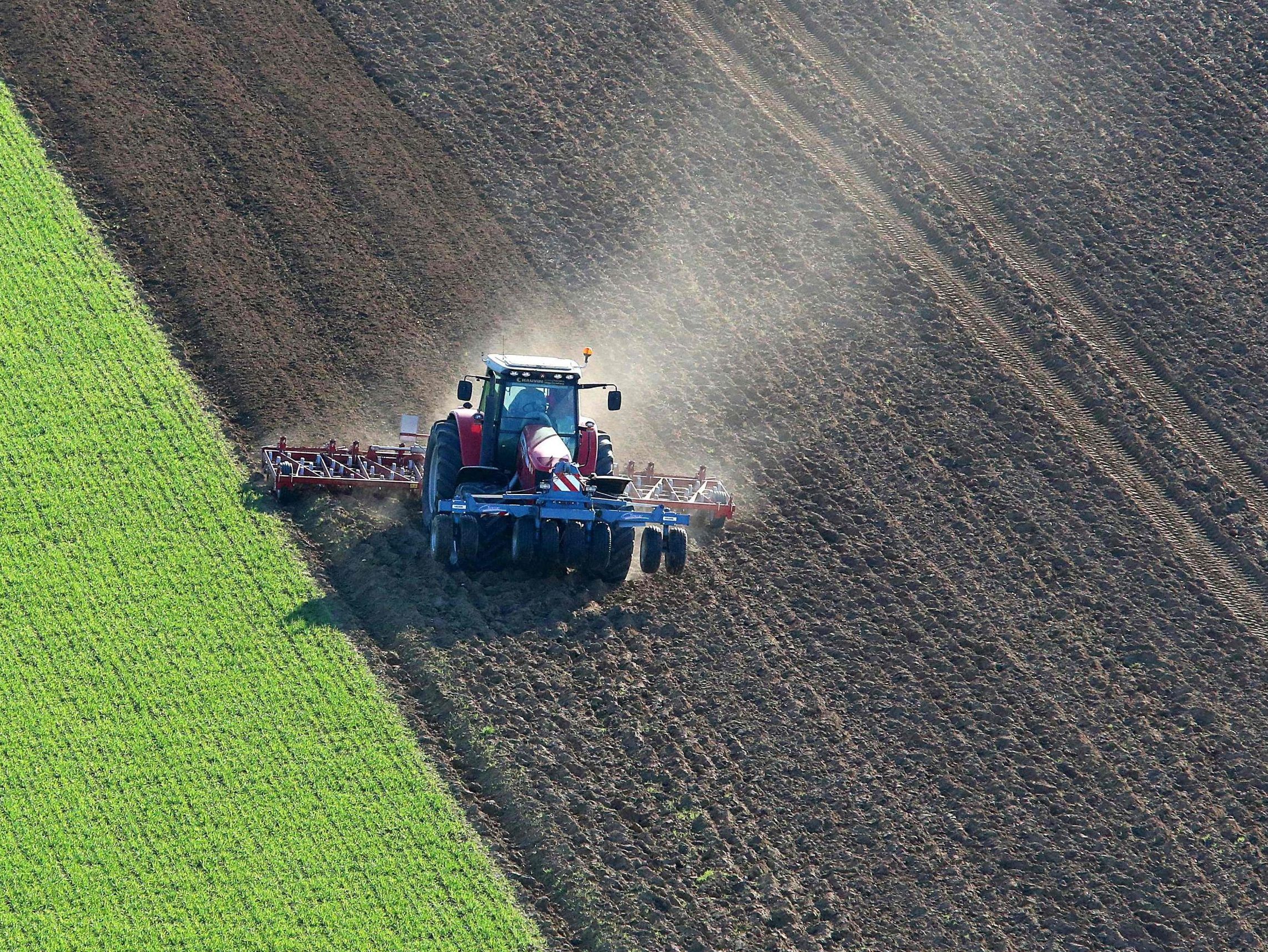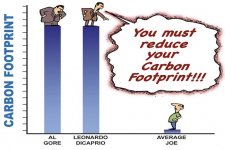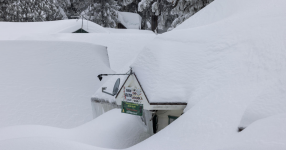Sure build some more coal fired plants , preferably In North Virginia .
It's Climate Change I tell'ya!! IT'S CLIMATE CHANGE!!
- Thread starter B00Mer
- Start date
You are using an out of date browser. It may not display this or other websites correctly.
You should upgrade or use an alternative browser.
You should upgrade or use an alternative browser.
Late spring brings good news for bees, but not for plants, studies say
Author of the article ostmedia News
ostmedia News
Published Mar 12, 2023 • 1 minute read
The Weather Network has said spring might not be coming just yet to Canada and that’s both good and bad news, according to two studies.
An early spring would have been positive for plants, according to North Carolina State University researchers.
That’s because it can impact the amount of leaves plants produce, which also increases the amount of carbon they can capture and store during photosynthesis, according to the study.
The study was published in Global Biogeochemical Cycles. Its authors said the amount of leaves plants are able to produce is what’s known as “greening,” while a decrease in vegetation growth is called “browning.”
Researchers used satellites to measure plant “greening” between 2000 and 2014 as well as sensors to calculate how much carbon plants removed from the atmosphere each year during photosynthesis.
However, a late spring is good for bees, according to Lund University researchers.
Some Queen bees are waking up an average of five days earlier than two decades ago.
Maria Blasi Romero, a researcher, says that increases the risk of losing additional bumblebee species, and having less pollination of crops and wild plants.
“Across Sweden, we see that the increased temperatures due to climate change clearly affect when the queens wake up and fly to find a new nest,” Romero said.
Researcher Anna S Persson says there is a risk this can lead to bumblebees not getting enough food and a mismatch between when flowering plants and bees are active.
“We see a clear risk that more bumblebee species are at risk of extinction locally, especially the species that usually emerge later in the summer. This could also lead to a decline in the number of bumblebees overall and that would have consequences for the pollination of crops and the functioning of ecosystems. Bumblebees are important pollinators, especially in northern latitudes such as in Scandinavia,” Persson said.



 torontosun.com
torontosun.com
Author of the article
Published Mar 12, 2023 • 1 minute read
The Weather Network has said spring might not be coming just yet to Canada and that’s both good and bad news, according to two studies.
An early spring would have been positive for plants, according to North Carolina State University researchers.
That’s because it can impact the amount of leaves plants produce, which also increases the amount of carbon they can capture and store during photosynthesis, according to the study.
The study was published in Global Biogeochemical Cycles. Its authors said the amount of leaves plants are able to produce is what’s known as “greening,” while a decrease in vegetation growth is called “browning.”
Researchers used satellites to measure plant “greening” between 2000 and 2014 as well as sensors to calculate how much carbon plants removed from the atmosphere each year during photosynthesis.
However, a late spring is good for bees, according to Lund University researchers.
Some Queen bees are waking up an average of five days earlier than two decades ago.
Maria Blasi Romero, a researcher, says that increases the risk of losing additional bumblebee species, and having less pollination of crops and wild plants.
“Across Sweden, we see that the increased temperatures due to climate change clearly affect when the queens wake up and fly to find a new nest,” Romero said.
Researcher Anna S Persson says there is a risk this can lead to bumblebees not getting enough food and a mismatch between when flowering plants and bees are active.
“We see a clear risk that more bumblebee species are at risk of extinction locally, especially the species that usually emerge later in the summer. This could also lead to a decline in the number of bumblebees overall and that would have consequences for the pollination of crops and the functioning of ecosystems. Bumblebees are important pollinators, especially in northern latitudes such as in Scandinavia,” Persson said.
Earlier take-off could lead to fewer bumblebees and less pollination
With the arrival of spring, bumblebee queens take their first wing beat of the season and set out to find new nesting sites. But they are flying earlier in the year, as a result of a warmer climate and a changing agricultural landscape, according to new research from Lund University in Sweden.
eurekalert.org

Scientists use satellites to track earth ‘greening’ amid climate change
NC State researchers found changes in “greening,” or the amount of leaves plants are able to produce, will play a significant role in how much carbon dioxide plants capture and store.
eurekalert.org

Late spring brings good news for bees, but not for plants, studies say
The Weather Network has said spring might not be coming just yet to Canada and that's both good and bad news, according to two studies.
Right now it’s raining in Regina in the part of town that I’m in anyway…& it’s supposed to be -17°C tonight…. So that’s gonna be fun.
Are your skates sharp?Right now it’s raining in Regina in the part of town that I’m in anyway…& it’s supposed to be -17°C tonight…. So that’s gonna be fun.
On principal, I threw some ice melt down on my sidewalk on the lunch hour. I do have studded tires on my truck if that counts? Haven’t worn skates in almost four decades. Now it only says it’s going to get down to -13°C tonight.Are your skates sharp?
Well crank out the bathing suits! A heat wave!Now it only says it’s going to get down to -13°C tonight.
Absolutely. He didnt mention its -3. BBQ weather.Well crank out the bathing suits! A heat wave!
View attachment 17609
What happens in Tahoe doesnt stay in Tahoe.
AB SK and MB will be getting heavy snow in a few days right out the Sierras.
View attachment 17610

Moving quickly.
This tractor runs on cow manure
Author of the article:Bloomberg News
Bloomberg News
Kyle Stock
Published Mar 17, 2023 • 4 minute read
Trenance Farm sits at the extreme southwest spit of England, six hours from London and a kicked clod from the Celtic Sea. It’s a dairy farm whose owners, Kevin and Kate Hoare, still milk their cows by hand — 120 bovines, twice a day. But the Hoares are also working with some of the most vanguard climate technology on the planet.
Remember that scene in Back to the Future where Doc Brown pulls up in a flying DeLorean sports car, stuffs a bunch of garbage into it for fuel and blasts off? That, essentially, is what’s happening on the Trenance Farm. It is one of the first places in the world where one can find a tractor that runs exclusively on methane, the completely natural and highly polluting byproduct of pretty much any organic decomposition.
The machine — dubbed the New Holland T6 — weighs 21,000 pounds, boasts 180 horsepower and has as much oomph as a diesel tractor. But its 49-gallon tank spews 62% less nitrous oxide and up to 15% less carbon dioxide, all while running indefinitely on the manure of roughly 75 cows.
“It takes 10 minutes to refuel and we never run out of gas,” Kevin Hoare says. “We might only be a small fish, but at least we’re doing our bit.”
For all its greenery, agriculture is an insidious gusher of greenhouse gas: Heavy-duty equipment emits nitrous oxide and carbon dioxide, while pretty much everything else on a farm — the flora and fauna being raised — spews a continuous cloud of methane, a gas that breaks down naturally over a decade but in the meantime contributes to global warming at a rate 80 times that of carbon. While electrification is increasingly addressing emissions from cars and trucks, it’s less of a fit for farm machinery, because the requisite long hours and intense labour grind batteries down quickly.
That mismatch is what spurred CNH Industrial, an Italy-based rival to John Deere, to start exploring alternative fuels almost 20 years ago. The company latched onto methane because the gas is not only an agent of climate chaos, but on a farm it’s everywhere. While carbon swooned during COVID-19 lockdowns, emissions of methane, which accounts for about 20% of greenhouse gas emissions, continued to climb.
“Electrification has a role … but it’s not likely to replace diesel,” says CNH Chief Executive Officer Scott Wine. “But a medium-sized farm is going to produce more methane than it can use.”
Ironically, the most critical part of the T6 development process had little to do with the tractor itself. CNH needed a means to capture and process that methane, which it found in a startup called Bennamann Ltd. Since 2011, Bennamann has been making synthetic fabric domes, or membranes, that stretch over manure lagoons and capture wafting gas like a tented parachute in gym class. CNH bought a minority stake in Bennamann in 2021 and became a majority owner earlier this month.
“I think it’s the fastest path to a $1 billion business I’ve ever been around,” Wine said of Bennamann.
A critical ah-ha moment came when Bennamann co-founder Chris Mann realized he could use some of the captured gas to cool the rest, in a process not unlike that found in a propane-fueled refrigerator. When methane is cold enough, it becomes a liquid, which is far easier to transport and for an engine to work with. The company equipped its T6 engine with a turbo system and finely tuned the tractor’s combustion for methane. As a result, any farmer with a Bennamann dome can pull their T6 up to the Bennamann digester and fill it like a car at a gas station. One dome can store a month’s worth of gas, which can be processed into fuel in about four days.
“We call it the magic factory,” Mann says. “Organic waste goes in and the gas comes out. There’s no heat; it’s just nature doing its thing.”
The T6 does have its downsides: It costs $203,000, roughly 30% more than an equivalent diesel tractor, though CNH says that premium is covered in less than a year of refills via cow. Customers with a methane surplus can also sell the gas, burn it in a generator or even send juice back to the grid. On some Bennamann farms, the manure makes more money than the milk and meat.
For now, CNH is pushing its tractor and manure tent as a package, focused primarily on dairy farms in Europe. (In the UK alone, there are about 12,000 farms with at least 75 cows.) But a similar setup would work virtually anywhere there’s a font of methane, from landfills to fish markets. Rice patties, for example, are a massive source of methane.
On the Trenance Farm, the T6 runs up to 10 hours a day — rolling, plowing, harrowing, hauling, cutting, feeding and of course scraping heaps of cow poop into a pit. It has already had a significant impact: The farm is burning about 100 fewer gallons of diesel each month, the equivalent of 1,080 kilograms of carbon emissions (what a passenger car spews every three months). It’s also tenting so much methane that the Hoares started using the excess gas to power a generator, which in turn churns out enough electricity to juice the entire farm.
For years, Hoare has been bugging the local utility for enough voltage to install an automated milking system; now he doesn’t have to. The cows, in a way, will milk themselves.
“It’s a closed loop,” he says. “We’re totally off-grid, we’ve got our own water supply and honestly, the whole place smells better.”

 torontosun.com
torontosun.com
Author of the article:Bloomberg News
Bloomberg News
Kyle Stock
Published Mar 17, 2023 • 4 minute read
Trenance Farm sits at the extreme southwest spit of England, six hours from London and a kicked clod from the Celtic Sea. It’s a dairy farm whose owners, Kevin and Kate Hoare, still milk their cows by hand — 120 bovines, twice a day. But the Hoares are also working with some of the most vanguard climate technology on the planet.
Remember that scene in Back to the Future where Doc Brown pulls up in a flying DeLorean sports car, stuffs a bunch of garbage into it for fuel and blasts off? That, essentially, is what’s happening on the Trenance Farm. It is one of the first places in the world where one can find a tractor that runs exclusively on methane, the completely natural and highly polluting byproduct of pretty much any organic decomposition.
The machine — dubbed the New Holland T6 — weighs 21,000 pounds, boasts 180 horsepower and has as much oomph as a diesel tractor. But its 49-gallon tank spews 62% less nitrous oxide and up to 15% less carbon dioxide, all while running indefinitely on the manure of roughly 75 cows.
“It takes 10 minutes to refuel and we never run out of gas,” Kevin Hoare says. “We might only be a small fish, but at least we’re doing our bit.”
For all its greenery, agriculture is an insidious gusher of greenhouse gas: Heavy-duty equipment emits nitrous oxide and carbon dioxide, while pretty much everything else on a farm — the flora and fauna being raised — spews a continuous cloud of methane, a gas that breaks down naturally over a decade but in the meantime contributes to global warming at a rate 80 times that of carbon. While electrification is increasingly addressing emissions from cars and trucks, it’s less of a fit for farm machinery, because the requisite long hours and intense labour grind batteries down quickly.
That mismatch is what spurred CNH Industrial, an Italy-based rival to John Deere, to start exploring alternative fuels almost 20 years ago. The company latched onto methane because the gas is not only an agent of climate chaos, but on a farm it’s everywhere. While carbon swooned during COVID-19 lockdowns, emissions of methane, which accounts for about 20% of greenhouse gas emissions, continued to climb.
“Electrification has a role … but it’s not likely to replace diesel,” says CNH Chief Executive Officer Scott Wine. “But a medium-sized farm is going to produce more methane than it can use.”
Ironically, the most critical part of the T6 development process had little to do with the tractor itself. CNH needed a means to capture and process that methane, which it found in a startup called Bennamann Ltd. Since 2011, Bennamann has been making synthetic fabric domes, or membranes, that stretch over manure lagoons and capture wafting gas like a tented parachute in gym class. CNH bought a minority stake in Bennamann in 2021 and became a majority owner earlier this month.
“I think it’s the fastest path to a $1 billion business I’ve ever been around,” Wine said of Bennamann.
A critical ah-ha moment came when Bennamann co-founder Chris Mann realized he could use some of the captured gas to cool the rest, in a process not unlike that found in a propane-fueled refrigerator. When methane is cold enough, it becomes a liquid, which is far easier to transport and for an engine to work with. The company equipped its T6 engine with a turbo system and finely tuned the tractor’s combustion for methane. As a result, any farmer with a Bennamann dome can pull their T6 up to the Bennamann digester and fill it like a car at a gas station. One dome can store a month’s worth of gas, which can be processed into fuel in about four days.
“We call it the magic factory,” Mann says. “Organic waste goes in and the gas comes out. There’s no heat; it’s just nature doing its thing.”
The T6 does have its downsides: It costs $203,000, roughly 30% more than an equivalent diesel tractor, though CNH says that premium is covered in less than a year of refills via cow. Customers with a methane surplus can also sell the gas, burn it in a generator or even send juice back to the grid. On some Bennamann farms, the manure makes more money than the milk and meat.
For now, CNH is pushing its tractor and manure tent as a package, focused primarily on dairy farms in Europe. (In the UK alone, there are about 12,000 farms with at least 75 cows.) But a similar setup would work virtually anywhere there’s a font of methane, from landfills to fish markets. Rice patties, for example, are a massive source of methane.
On the Trenance Farm, the T6 runs up to 10 hours a day — rolling, plowing, harrowing, hauling, cutting, feeding and of course scraping heaps of cow poop into a pit. It has already had a significant impact: The farm is burning about 100 fewer gallons of diesel each month, the equivalent of 1,080 kilograms of carbon emissions (what a passenger car spews every three months). It’s also tenting so much methane that the Hoares started using the excess gas to power a generator, which in turn churns out enough electricity to juice the entire farm.
For years, Hoare has been bugging the local utility for enough voltage to install an automated milking system; now he doesn’t have to. The cows, in a way, will milk themselves.
“It’s a closed loop,” he says. “We’re totally off-grid, we’ve got our own water supply and honestly, the whole place smells better.”

This tractor runs on cow manure
Trenance Farm sits at the extreme southwest spit of England, six hours from London and a kicked clod from the Celtic Sea.
This tractor runs on cow manure
Author of the article:Bloomberg News
Bloomberg News
Kyle Stock
Published Mar 17, 2023 • 4 minute read
Trenance Farm sits at the extreme southwest spit of England, six hours from London and a kicked clod from the Celtic Sea. It’s a dairy farm whose owners, Kevin and Kate Hoare, still milk their cows by hand — 120 bovines, twice a day. But the Hoares are also working with some of the most vanguard climate technology on the planet.
Remember that scene in Back to the Future where Doc Brown pulls up in a flying DeLorean sports car, stuffs a bunch of garbage into it for fuel and blasts off? That, essentially, is what’s happening on the Trenance Farm. It is one of the first places in the world where one can find a tractor that runs exclusively on methane, the completely natural and highly polluting byproduct of pretty much any organic decomposition.
The machine — dubbed the New Holland T6 — weighs 21,000 pounds, boasts 180 horsepower and has as much oomph as a diesel tractor. But its 49-gallon tank spews 62% less nitrous oxide and up to 15% less carbon dioxide, all while running indefinitely on the manure of roughly 75 cows.
“It takes 10 minutes to refuel and we never run out of gas,” Kevin Hoare says. “We might only be a small fish, but at least we’re doing our bit.”
For all its greenery, agriculture is an insidious gusher of greenhouse gas: Heavy-duty equipment emits nitrous oxide and carbon dioxide, while pretty much everything else on a farm — the flora and fauna being raised — spews a continuous cloud of methane, a gas that breaks down naturally over a decade but in the meantime contributes to global warming at a rate 80 times that of carbon. While electrification is increasingly addressing emissions from cars and trucks, it’s less of a fit for farm machinery, because the requisite long hours and intense labour grind batteries down quickly.
That mismatch is what spurred CNH Industrial, an Italy-based rival to John Deere, to start exploring alternative fuels almost 20 years ago. The company latched onto methane because the gas is not only an agent of climate chaos, but on a farm it’s everywhere. While carbon swooned during COVID-19 lockdowns, emissions of methane, which accounts for about 20% of greenhouse gas emissions, continued to climb.
“Electrification has a role … but it’s not likely to replace diesel,” says CNH Chief Executive Officer Scott Wine. “But a medium-sized farm is going to produce more methane than it can use.”
Ironically, the most critical part of the T6 development process had little to do with the tractor itself. CNH needed a means to capture and process that methane, which it found in a startup called Bennamann Ltd. Since 2011, Bennamann has been making synthetic fabric domes, or membranes, that stretch over manure lagoons and capture wafting gas like a tented parachute in gym class. CNH bought a minority stake in Bennamann in 2021 and became a majority owner earlier this month.
“I think it’s the fastest path to a $1 billion business I’ve ever been around,” Wine said of Bennamann.
A critical ah-ha moment came when Bennamann co-founder Chris Mann realized he could use some of the captured gas to cool the rest, in a process not unlike that found in a propane-fueled refrigerator. When methane is cold enough, it becomes a liquid, which is far easier to transport and for an engine to work with. The company equipped its T6 engine with a turbo system and finely tuned the tractor’s combustion for methane. As a result, any farmer with a Bennamann dome can pull their T6 up to the Bennamann digester and fill it like a car at a gas station. One dome can store a month’s worth of gas, which can be processed into fuel in about four days.
“We call it the magic factory,” Mann says. “Organic waste goes in and the gas comes out. There’s no heat; it’s just nature doing its thing.”
The T6 does have its downsides: It costs $203,000, roughly 30% more than an equivalent diesel tractor, though CNH says that premium is covered in less than a year of refills via cow. Customers with a methane surplus can also sell the gas, burn it in a generator or even send juice back to the grid. On some Bennamann farms, the manure makes more money than the milk and meat.
For now, CNH is pushing its tractor and manure tent as a package, focused primarily on dairy farms in Europe. (In the UK alone, there are about 12,000 farms with at least 75 cows.) But a similar setup would work virtually anywhere there’s a font of methane, from landfills to fish markets. Rice patties, for example, are a massive source of methane.
On the Trenance Farm, the T6 runs up to 10 hours a day — rolling, plowing, harrowing, hauling, cutting, feeding and of course scraping heaps of cow poop into a pit. It has already had a significant impact: The farm is burning about 100 fewer gallons of diesel each month, the equivalent of 1,080 kilograms of carbon emissions (what a passenger car spews every three months). It’s also tenting so much methane that the Hoares started using the excess gas to power a generator, which in turn churns out enough electricity to juice the entire farm.
For years, Hoare has been bugging the local utility for enough voltage to install an automated milking system; now he doesn’t have to. The cows, in a way, will milk themselves.
“It’s a closed loop,” he says. “We’re totally off-grid, we’ve got our own water supply and honestly, the whole place smells better.”

This tractor runs on cow manure
Trenance Farm sits at the extreme southwest spit of England, six hours from London and a kicked clod from the Celtic Sea.torontosun.com
Shit like this (pun, yes
With human ingenuity, we can do lots of things. Simply stopping something because it's supposedly bad for the climate is stupid without an alternative. This is a good example of human ingenuity solving a problem. Creating problems with no solutions isn't the way to go and that's what's happening now.Shit like this (pun, yes) needs to be out there more.
Good on them!!
This is not new. Our landfills have been pumping methane into the gas lines for decades.It is however somewhat expensive to set up and won't work in all situations.
Only until they want a steak.But I thought the Greenies hated cow farts.
Here we go again. The Intergovernmental Panel on Climate Change (IPCC) has issued a new document — the final part of its mammoth sixth report — and we all know what that means. More doomsday porn in the papers. More shroud-waving from eco-agitators. More warnings of imminent apocalypse. The climate cult has not disappointed. Our world is on the “brink of catastrophic warming,” cries the Washington Post. We’re headed for “climate disaster,” warns the BBC. The “climate time bomb” is ticking, says UN secretary general António Guterres. In short, the countdown to doom continues. Unless we repent of our eco-sins, we’ll cause the heat death of our celestial home.

 apple.news
apple.news

As to the now mainstream belief that climate change will intensify “weather of mass destruction,” causing more deaths in natural disasters, “the science” on that is also far from clear-cut. The IPCC only says it’s “likely” that human influence is driving some instances of heavy rainfall, for example. It expresses only “medium confidence” that climate change has impacted on water availability in parts of the world. Confidence is “low,” it says, that flooding on a global scale has been shaped by man’s impact on the climate. What we can be confident of, though, is that fewer people are perishing in natural calamities. As Shellenberger says, “In 1931, 3.7 million people died from natural disasters. In 2018, just 11,000 did.” And that brilliant decline in death happened at a time when the human population quadrupled. Maybe that ice we’re skating on isn’t so thin after all.
Speaking of ice, recent studies suggest there has been a stabilization and even growth in the Antarctic ice shelf, that thing we’re constantly told is disappearing thanks to dastardly mankind. The Great Barrier Reef is doing pretty well too, in defiance of the numerous obituaries eco-doomsters wrote for that natural wonder (a 2014 piece in the Guardian was literally titled “The Great Barrier Reef: an obituary”). The ozone layer is recovering nicely. Green hysterics are wrong about everything. The End of Days that keeps them up at night never materializes. No wonder Greta Thunberg deleted that tweet in which she shared the harebrained claim that “climate change will wipe out all of humanity” if we don’t “stop using fossil fuels over the next five years.” A tweet she posted… five years ago.
The IPCC’s treatment of climate change as the gravest challenge facing mankind is a problem. It has a warping effect on our political priorities, implicitly downgrading issues like global poverty or deaths from disease by dragging our gaze, always, to climate. And it lends legitimacy to the crankier bell-tolling of the green movement. Indeed, those one-liners spun by António Guterres — “code red for humanity,” “the alarm bells are deafening,” “humanity is on thin ice” — do nothing to challenge the terror-mongering of green talking heads, and a lot to inflame it.

Indeed, the latest IPCC document makes a preposterous demand of developed countries — that they should aim for Net Zero by 2040 rather than 2050. Apparently we should devote ourselves to achieving that expensive, anti-industry, anti-jobs goal of Net Zero 10 years earlier than planned. Here is the entire problem with the climate-change obsession — it’s the luxury belief we can no longer afford.

This new IPCC report, like its 2021 predecessor, has landed in a time of crisis. In our post-lockdown era of soaring inflation and energy shortages, we can ill-afford to carry on indulging the late-bourgeois fantasy that modernity is a planet-killing force. We can no longer nod along to this petrified ideology that bears a great deal of responsibility for today’s energy problems and for the stalling of development in poorer parts of the world.
Luxuriant apocalypticism, with its provision of a sense of mission to our lost elites, might have been just about tolerable in good times — it’s a non-starter in bad times.

The true conflict today is not between humankind and Mother Earth. It’s between the needs of ordinary people and the fantasies of a global elite that dolls up its loss of faith in industry and progress as “climate-change activism.” That tension will explode soon. We should hope it does, anyway.
Brendan O'Neill: Eco-dread is a luxury belief we can no longer afford — National Post
Climate-change hysteria is a menace to the lives and interests of working people.

As to the now mainstream belief that climate change will intensify “weather of mass destruction,” causing more deaths in natural disasters, “the science” on that is also far from clear-cut. The IPCC only says it’s “likely” that human influence is driving some instances of heavy rainfall, for example. It expresses only “medium confidence” that climate change has impacted on water availability in parts of the world. Confidence is “low,” it says, that flooding on a global scale has been shaped by man’s impact on the climate. What we can be confident of, though, is that fewer people are perishing in natural calamities. As Shellenberger says, “In 1931, 3.7 million people died from natural disasters. In 2018, just 11,000 did.” And that brilliant decline in death happened at a time when the human population quadrupled. Maybe that ice we’re skating on isn’t so thin after all.
Speaking of ice, recent studies suggest there has been a stabilization and even growth in the Antarctic ice shelf, that thing we’re constantly told is disappearing thanks to dastardly mankind. The Great Barrier Reef is doing pretty well too, in defiance of the numerous obituaries eco-doomsters wrote for that natural wonder (a 2014 piece in the Guardian was literally titled “The Great Barrier Reef: an obituary”). The ozone layer is recovering nicely. Green hysterics are wrong about everything. The End of Days that keeps them up at night never materializes. No wonder Greta Thunberg deleted that tweet in which she shared the harebrained claim that “climate change will wipe out all of humanity” if we don’t “stop using fossil fuels over the next five years.” A tweet she posted… five years ago.
The IPCC’s treatment of climate change as the gravest challenge facing mankind is a problem. It has a warping effect on our political priorities, implicitly downgrading issues like global poverty or deaths from disease by dragging our gaze, always, to climate. And it lends legitimacy to the crankier bell-tolling of the green movement. Indeed, those one-liners spun by António Guterres — “code red for humanity,” “the alarm bells are deafening,” “humanity is on thin ice” — do nothing to challenge the terror-mongering of green talking heads, and a lot to inflame it.

Indeed, the latest IPCC document makes a preposterous demand of developed countries — that they should aim for Net Zero by 2040 rather than 2050. Apparently we should devote ourselves to achieving that expensive, anti-industry, anti-jobs goal of Net Zero 10 years earlier than planned. Here is the entire problem with the climate-change obsession — it’s the luxury belief we can no longer afford.

This new IPCC report, like its 2021 predecessor, has landed in a time of crisis. In our post-lockdown era of soaring inflation and energy shortages, we can ill-afford to carry on indulging the late-bourgeois fantasy that modernity is a planet-killing force. We can no longer nod along to this petrified ideology that bears a great deal of responsibility for today’s energy problems and for the stalling of development in poorer parts of the world.
Luxuriant apocalypticism, with its provision of a sense of mission to our lost elites, might have been just about tolerable in good times — it’s a non-starter in bad times.

The true conflict today is not between humankind and Mother Earth. It’s between the needs of ordinary people and the fantasies of a global elite that dolls up its loss of faith in industry and progress as “climate-change activism.” That tension will explode soon. We should hope it does, anyway.
Hold the bastards liable. Class action suits fielded by anyone harmed by climate lies. Climate would calm down in hours after the first filing.




